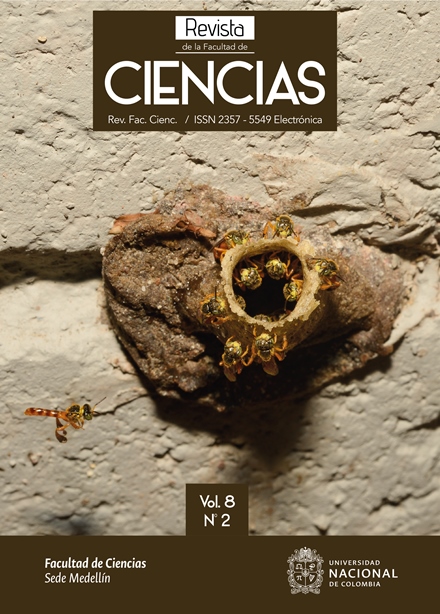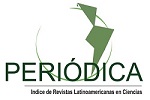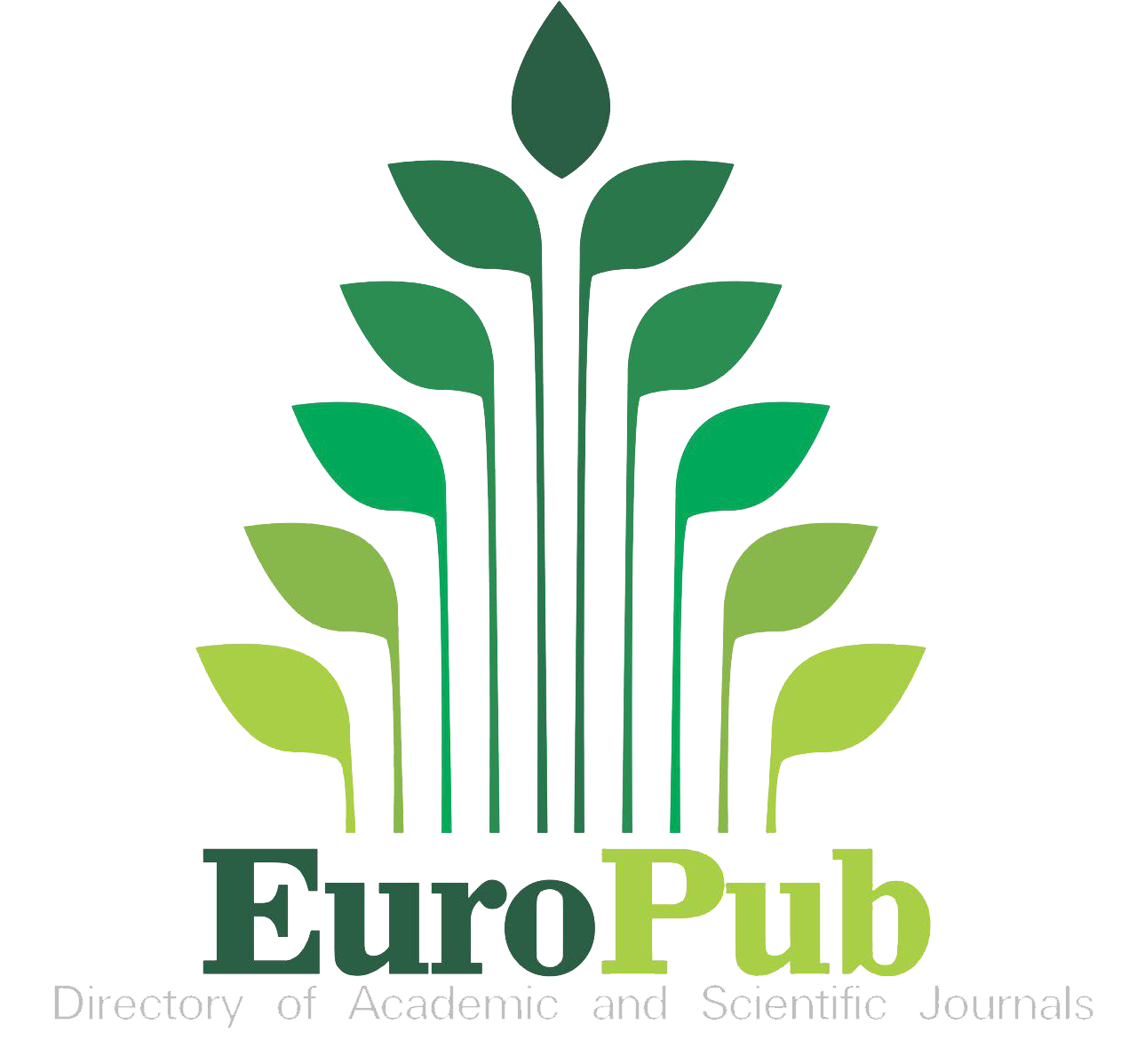Síntesis de Zeolitas tipo Cancrinita de Sulfato mediante la reacción Redox Permanganato-Tiosulfato
Synthesis of Sulphate Cancrinite-type Zeolite by the Redox Permanganate-Thiosulfate ions reaction
DOI:
https://doi.org/10.15446/rev.fac.cienc.v8n2.78901Keywords:
Cancrinita, permanganato, reacciones redox, tiosulfato. (es)Cancrinite, permanganate, reaction redox, thiosulfate. (en)
Downloads
Se estudió la influencia de la composición aniónica en la reacción redox permanganato-tiosulfato en la síntesis de la zeolita tipo cancrinita de sulfato, utilizando diferentes concentraciones de NaOH: 8, 12 y 16 M, y diferentes relaciones en peso KMnO4/(Na2S2O3+KMnO4) comprendidos entre 0 y 100%. La síntesis se realizó a partir de zeolita X, presión autógena y 80 ºC por 240 h. Los sólidos fueron caracterizados mediante las técnicas de difracción de rayos X (DRX), espectroscopia infrarrojo con transformada de Fourier (FT-IR) y análisis elemental por EDX. Los resultados mostraron, independientemente de la concentración de la base: que con un 100% de KMnO4, se generó la cancrinita de manganato. Con un 0, 25 y 50 % p/p en KMnO4 en el gel de reacción, se forma la cancrinita de tiosulfato. Para un 75% p/p en KMnO4 se obtuvo la cancrinita de sulfato producto de la reacción redox entre el permanganato y el tiosulfato. En base a los resultados obtenidos, se puede concluir que ocurrió una reacción redox para las composiciones aniónicas 25, 50, 75 y 100% en KMnO4. El orden de poder moldeante en la formación de la zeolita tipo cancrinita es: S2O32- >SO42- >>MnO4-
The influence of the anionic composition in the redox permanganate-thiosulfate ions reaction in the synthesis of suphate cancrinite-type zeolite was studied, using different concentrations of NaOH: 8, 12 and 16 M, and different KMnO4/Na2S2O3 ratios between 0 and 100 w/w %. The synthesis was carried out from zeolite X, 80 ° C and autogenous pressure for 240 h. Solids obtained were characterized by: X-ray diffraction (XRD), infrared spectroscopy with Fourier transform (FT-IR) and elemental analysis by EDX. Results showed that manganate cancrinite was produced at permanganate ion 100 w/w% and for all base concentrations. At 0, 25 and 50 w/w% KMnO4 and all NaOH concentrations, the thiosulphate cancrinite. For 75 w/w% KMnO4 and all NaOH concentrations, the sulphate cancrinite is produced by the redox thiosulfate-permanganate anions reaction. Based in obtained results, it can be concluded that a redox reaction at: 25, 50, 75 and 100 w/w % in KMnO4 has occurred. The template power to the synthesis of cancrinite-type zeolites is S2O32- >SO42- >>MnO4- .
References
Baerlocher, Ch., McCusker, LB. & Olson D.H. (2007).Atlas of zeolites framework types. Ed. Elsevier, Amsterdam. Sixth Revised Edition.
Barnes, M. C., Addai-Mensah, J. & Gerson A. R. (1999). The mechanism of the sodalite-to-cancrinite phase transformation in synthetic spent Bayer liquor. Microporous and Mesoporous Materials, 31(3), 287-302.
Barrer, R. M. & Cole J.F. (1970). Chemistry of soil minerals. Part VI. Salt entrainment by sodalite and cancrinite during their synthesis. Journal of the Chemical Society A: Inorganic, Physical, Theoretical, 1516-1523.
Buhl, J-Ch., Stief, F., Fechtelkord, M., Gesing, T.M., Taphorn, U. & Taake C. (2000). Synthesis, X-ray diffraction and MAS NMR characteristics of nitrate cancrinite Na7.6[AlSiO4]6(NO3)1.6(H2O)2. Journal of Alloys and Compounds, 305 (1-2), 93-102.
Cotton, F. A. & Wilkinson, G. (1975). Química inorgánica avanzada, Segunda Edición. Editorial Limusa. México.
Fischer, R. & Peters D. (1969). Compendio de Análisis Químico Cuantitativo, Editorial Interamericana, Primera Edición, México.
Flanigen, E., Khatami, H. & Syzmansky, H. (1971). Infrared Structural Studies of Zeolite Frameworks. Advanced Chemical Series, 101, 201-229.
Hund, F. (1984) Nitrat-, Thiosulfat-, Sulfat- und Sulfid-Cancrinit. Zeitschrift fur Anorganische und Allgemeine Chemie, 509(2), 153–160.
Linares, C.F., Madriz, S., Goldwasser, M. & Urbina de Navarro C.(2001). A novel method in the synthesis of cancrinite-type zeolites. Studies in Surface Science and Catalysis, 135 (1-3), 331-339.
Linder D. (1998). Handbook of Chemistry and physics. Edition 78TH. CRC Press.
Lindner, G., Massa, W. & Reinen, D. J. (1995). Structure and Properties of Hydrothermally Synthesized Thiosulfate Cancrinite. Journal of Solid State Chemistry, 117(2), 386-391.
Mintova, S. & Barrier, N. (2016). Verified Synthesis of Zeolitic Materials. Ed. Elsevier, Amsterdam. Third Revised Edition.
Ocanto, F. (2009). Síntesis, caracterización, y aplicaciones farmacéuticas y ambientales de zeolitas tipo cancrinita. Tesis Doctoral para optar al título de Doctor en Ciencias, Mención Química. Facultad de Ciencias. Universidad Central de Venezuela.
Ocanto, F., Figueredo, E., Brikgi, M., Urbina de Navarro C. & Linares C. F. (2009). Oxidation-reduction reactions: A novel method in the synthesis of nitrate cancrinite-type zeolites. Materials Letters, 63(1), 11-14.
Skoog D., West D. & Holler F. (1998). Química analítica. Editorial Mc Graw-Hill. Sexta Edición, México.
Treacy, M.M. & Higgins J.B. (2001). Collection of Simulated XRD Powder Patterns for Zeolites. Ed. Elsevier, Amsterdam. Fourth Revised.
Welcher, F. J. & Hahn, R. B. (1955). Semimicro Qualitative Analysis, Segunda Edición. D. Van Nostrand Company, Inc. Canada.
Weller, M. T. (2000). Where zeolites and oxides merge: semi-condensed tetrahedral frameworks. Journal of the Chemical society, Dalton Transactions, 23, 4227-4240.
How to Cite
APA
ACM
ACS
ABNT
Chicago
Harvard
IEEE
MLA
Turabian
Vancouver
Download Citation
License
Copyright (c) 2019 Revista de la Facultad de Ciencias

This work is licensed under a Creative Commons Attribution-NonCommercial-NoDerivatives 4.0 International License.
The authors or copyright holders of each paper confer to the Journal of the Faculty of Sciences of Universidad Nacional de Colombia a non-exclusive, limited and free authorization on the paper that, once evaluated and approved, is sent for its subsequent publication in accordance with the following characteristics:
- The corrected version is sent according to the suggestions of the evaluators and it is clarified that the paper mentioned is an unpublished document on which the rights are authorized and full responsibility is assumed for the content of the work before both the Journal of the Faculty of Sciences, Universidad Nacional de Colombia and third parties.
- The authorization granted to the Journal will be in force from the date it is included in the respective volume and number of the Journal of the Faculty of Sciences in the Open Journal Systems and on the Journal’s home page (https://revistas.unal.edu.co/index.php/rfc/index), as well as in the different databases and data indexes in which the publication is indexed.
- The authors authorize the Journal of the Faculty of Sciences of Universidad Nacional de Colombia to publish the document in the format in which it is required (printed, digital, electronic or any other known or to be known) and authorize the Journal of the Faculty of Sciences to include the work in the indexes and search engines deemed necessary to promote its diffusion.
- The authors accept that the authorization is given free of charge, and therefore they waive any right to receive any emolument for the publication, distribution, public communication, and any other use made under the terms of this authorization.
- All the contents of the Journal of the Faculty of Sciences are published under the Creative Commons Attribution – Non-commercial – Without Derivative 4.0.License
MODEL LETTER OF PRESENTATION and TRANSFER OF COPYRIGHTS
Personal data processing policy
The names and email addresses entered in this Journal will be used exclusively for the purposes set out in it and will not be provided to third parties or used for other purposes.





















